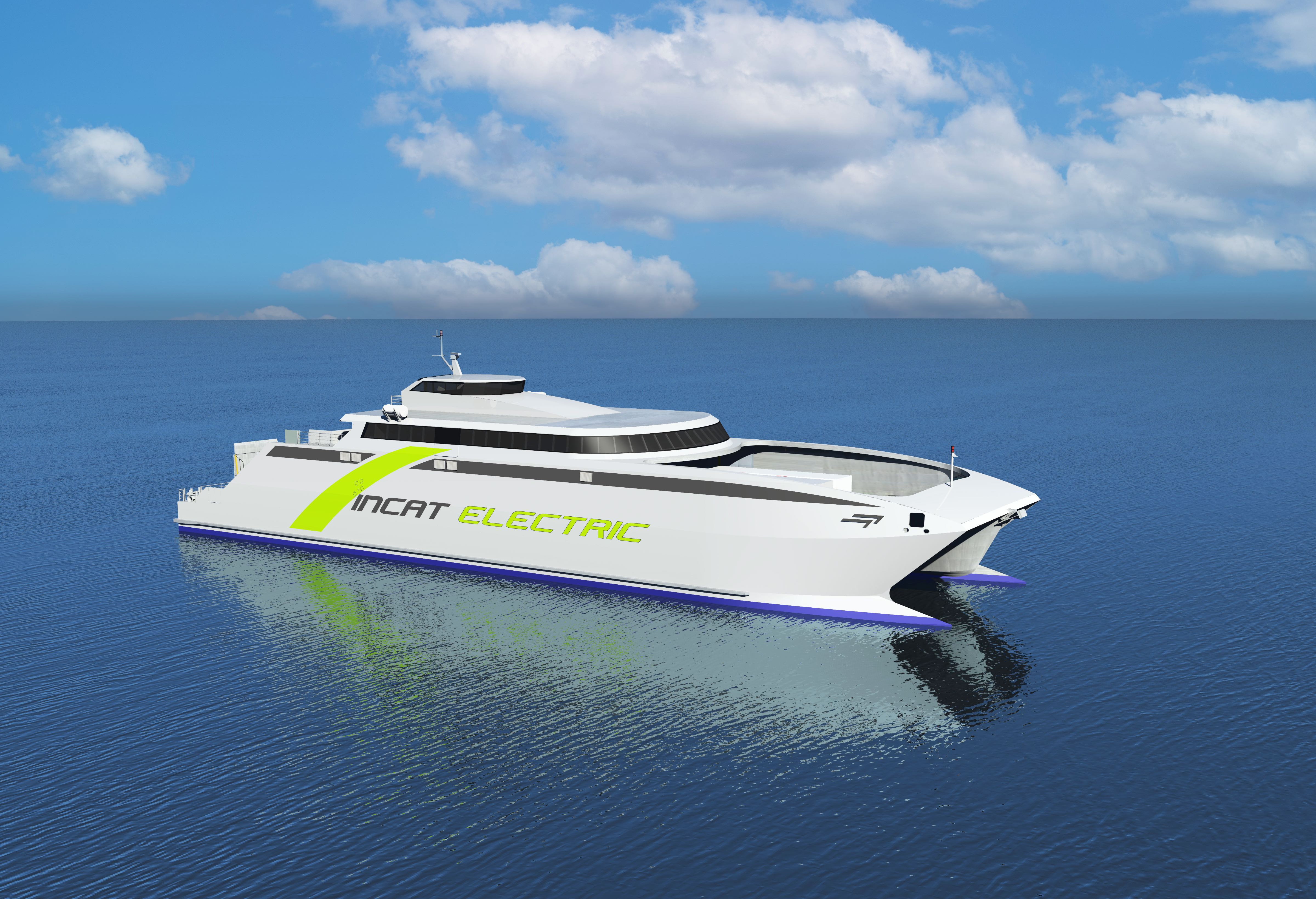Incat has always been an innovator and is once again leading the industry by constructing the largest lightweight battery electric ship in the world. We are at the cutting edge of environmentally friendly craft, providing optimal lightweight ship solutions for ferry operators around the world.
Hull 096 is the ninth Incat built vessel for South American company Buquebus. Operating between Buenos Aires and Uruguay, it will be 130 metres long with a capacity to carry 2,100 passengers and 226 vehicles.
Incat is based in Tasmania, where we can generate 100% of our energy needs from renewables. The vessel operates with low-emissions, and the energy consumed in its construction comes from 100% renewable sources.
THE GREENEST AUSTRALIAN STATE
MAXIMISING EFFICIENCY
Changing to electric propulsion isn’t just a matter of replacing fossil fuel based machinery, a complete rethink of ship design is required to achieve the best outcome. Electric ships need to be as light as possible to be truly efficient. A heavy displacement steel ship requires far more energy than a light displacement aluminium ship.
Removing any unjustified weight within a ship also helps to reduce energy demands. The amount of batteries required can be reduced by lowering the average speed of a vessel. The most efficient electrical ship will be light and sail at medium to low speeds.
EQUIVALENT SHIP COMPARISON
These charts compare a known existing modern steel Ro-Pax vessel of 5,000 DWT with an equivalent 5,000 DWT Incat Aluminium Fast Utility Ro-Pax vessel.
The Incat vessel compares favourably with the steel Ro-Pax at two different deadweight capacities across a range of speeds.
These results have been achieved through increased energy efficiency using a holistic approach based on:
- Lightest structural and fitout possible.
- Optimised hull design and efficiency.
- Minimised hotel and auxiliary loads on board.
- Direct drive E-Motor propulsion.
Propulsion VS Speed
GREEN: Incat Vessel
RED: Equivalent Steel Ship
Emission Reduction
SAVING ENERGY
A lightweight Incat ship will use up to 40% less power than an equivalent steel ship. This means up to 40% less emissions. A lightweight Incat ship may also convert to Zero Emissions more readily due to its lower power requirements.
Weight & Cost Saving:
- Aluminium is lightweight without sacrificing strength, it’s one third the weight of steel, after design factors the finished weight of an aluminium ship will be HALF that of steel
- Lower weight ships require less energy for propulsion offering longer range or faster speed than a steel ship using equivalent battery power.
- Lower weight aluminium saves on material handling costs during construction.
- Aluminium vessels require less maintenance due to high corrosion resistance, little to no surface coating means significant savings in time, cost and weight through the ship life cycle compared to steel which requires constant re-painting.
Environmental benefits:
- Less energy use and less pollution.
- Steel re-coating produces copious contaminated waste materials, paint, abrasives, grit blasting, solvents, PPE etc.

70M ELECTRIC HIGH SPEED RO-PAX FERRY
Incat’s focus remains on maximising efficiency in a growing clean energy market, and our knowledge in this space will prove invaluable during the construction of our newest 70m battery electric ferry.
This 70m vessel has been developed based on Incat’s and Revolution Design’s proven hull form, which has been optimised using CFD (Computational Fluid Dynamics) to ensure we are maximising efficiency and reducing required energy.
The vessel’s propulsion drive train consists of fixed pitch propellers driven by permanent magnet motors, all based on a DC electrical propulsion system to ensure the system is lightweight with minimal electrical loses on-board the vessel. The propulsion and energy storage systems are split equally across the two hulls to ensure the maximum redundancy in the propulsion system.